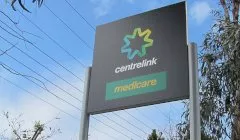Save
Rooftop solar avoids ‘sun tax’ but still faces caps
Power companies will soon be able to charge Australians with rooftop solar panels a tax for exporting electricity to the grid, albeit the regulators have walked back from the most controversial parts of the new plan.
Rooftop solar avoids ‘sun tax’ but still faces caps
Power companies will soon be able to charge Australians with rooftop solar panels a tax for exporting electricity to the grid, albeit the regulators have walked back from the most controversial parts of the new plan.

A proposal for households with rooftop solar panels to be charged for exporting electricity into the power grid has been softened, with regulators guaranteeing a “free option” for those who have solar panels.
Dubbed a ‘sun tax’, the original proposal highlighted the potential need to see consumers pay for excess solar power to the grid.
The Australian Energy Market Commission (AEMC) stated it is trying to avoid the problems of “traffic jams” on the network which is only likely to get worse as more Australians switch to solar panels.
The proposal for households with rooftop solar panels to be charged for exporting electricity in the power grid at a certain time has softened, albeit customers could be charged after 2025.

The commission’s chief executive, Benn Barr, said the AEMC had listened to feedback and tightened protections for consumers to ensure people would not have to pay to export solar if they chose not to.
“This means networks will have to offer a free basic service alongside any paid solar export plans, so people won’t have to pay if they don’t want to,” he stated.
“If they choose a paid plan where they earn more at some times and less at others, there will be more ways to earn and save.”
The changes come as around 20 per cent of all customers now partly meet their electricity needs through rooftop solar power generation, up from just 0.2 per cent in 2007.
That is predicted to more than double over the next two decades, highlighting the need for a long-term suitable plan to have more customers benefit from solar, while putting downward pressures on prices.
AEMC chair Anna Collyer said the reforms acknowledge that Australia has the fastest rate of solar take-up in the world and reflect concerns from industry, energy market bodies, consumers and environmental groups.
“By carving a path for smart solar, batteries and electric vehicles, more solar can be used, we will keep costs down for all consumers and protect the value of household solar investments already made,” Ms Collyer said.
“We don’t want to see solar going to waste.
“That costs everyone more because less cheap renewable energy gets into the system.”
Based on the latest retail and solar feed-in tariffs in each jurisdiction, 80 per cent of customers should see their bills drop under this reform because they would no longer pay for solar export services they aren’t using.
AEMC modelling shows that even under a worst-case cost scenario, solar owners choosing paid plans would still earn at least 90 per cent of what they do now – and that’s before taking any action to change their energy behaviours.
About the author

About the author


Tax saving
Navigating tax laws for capital gains in 2023
The landscape of Australian tax laws surrounding capital gains is ever-changing, with 2023 being no exception. Read more

Tax saving
What you need to know about the tax implications of crypto
One million Aussies are now invested in crypto, but many have not thought about how these investments will affect them at tax time. Read more

Tax saving
Welfare overhaul could give recipients a leg-up
Australia’s Centrelink recipients who’ve been doing it tough are in for a potentially easier time if the federal government pursues ambitious reforms that could provide sturdier safety nets. Read more

Tax saving
Students should think twice before tapping into their super
Former students might want to think carefully before they look to take advantage of the federal government’s biggest first home buyer incentive. Read more

Tax saving
Advocates call for an end to tax cuts
Social services sector advocates have warned that further tax cuts may make solving Australia’s biggest challenges much harder. Read more

Tax saving
ATO and AUSTRAC may gain new phone-tapping powers
A proposed update to electronic surveillance legislation could see the ATO armed with new powers that would allow the agency to bug phones and intercept online communications. Read more

Tax saving
Over 2m Aussies asked the TPB for help during the last year
As the economy recovers, Australia’s tax regulator says it’s planning to put unregistered practitioners under the microscope. Read more

Tax saving
Will you pay higher taxes due to bracket creep?
Bracket creep will see Australians paying more tax on average, unless further cuts are introduced in the future. Read more

Tax saving
Navigating tax laws for capital gains in 2023
The landscape of Australian tax laws surrounding capital gains is ever-changing, with 2023 being no exception. Read more

Tax saving
What you need to know about the tax implications of crypto
One million Aussies are now invested in crypto, but many have not thought about how these investments will affect them at tax time. Read more

Tax saving
Welfare overhaul could give recipients a leg-up
Australia’s Centrelink recipients who’ve been doing it tough are in for a potentially easier time if the federal government pursues ambitious reforms that could provide sturdier safety nets. Read more

Tax saving
Students should think twice before tapping into their super
Former students might want to think carefully before they look to take advantage of the federal government’s biggest first home buyer incentive. Read more

Tax saving
Advocates call for an end to tax cuts
Social services sector advocates have warned that further tax cuts may make solving Australia’s biggest challenges much harder. Read more

Tax saving
ATO and AUSTRAC may gain new phone-tapping powers
A proposed update to electronic surveillance legislation could see the ATO armed with new powers that would allow the agency to bug phones and intercept online communications. Read more

Tax saving
Over 2m Aussies asked the TPB for help during the last year
As the economy recovers, Australia’s tax regulator says it’s planning to put unregistered practitioners under the microscope. Read more

Tax saving
Will you pay higher taxes due to bracket creep?
Bracket creep will see Australians paying more tax on average, unless further cuts are introduced in the future. Read more















